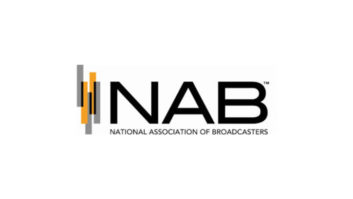While the mantra of the National Association of Broadcasters is to advocate for broadcasters, the issue of radio ownership has revealed a clear fissure between the NAB and the wishes of a number of broadcast owners and organizations.
With the comment door closing on May 29, broadcasters continue to share their opinions on exactly how the Federal Communications Committee should address the issue of local radio ownership. As Radio World has reported, the commission is reviewing its rules on radio ownership limits as part of the 2018 Quadrennial Review.
[Read: Broadcasters Go on Record in Droves to Share Concerns]
It’s clear that the lines have been drawn, and both sides are adamant that their stance has the best chance of helping the radio industry thrive.
Organizations like the Multicultural Media, Telecom and Internet Council submitted comments to the FCC to press the commission not to lift radio ownership cap and subcaps. The MMTC said that small broadcasters — especially in AM radio — already find themselves in a vulnerable position. The proposal that is being supported by the NAB “would run counter to diversity and competition while frustrating the commission’s AM revitalization initiatives,” said Maurita Coley, MMTC president and CEO, and David Honig, president emeritus and senior advisor.
The organization said the NAB proposal would have an especially negative effect on the public in 75+ markets. “The effect this policy would have on smaller, diverse broadcasters would ultimately place them at risk of being pushed out,” Coley and Honig said.
The NAB proposal consists of three main changes.
- One, that the FCC change its ownership rules so that a single entity can own or control up to eight commercial FM stations in Nielsen audio markets 1–75 with no cap on AM ownership;
- Two, that a licensee have the ability to own up to two more commercial FM stations (up to 10 FMs) if that licensee participates in the FCC’s incubator program;
- Three, that the commission eliminate restrictions on the number of commercial FM or AM stations a single entity can own in both unrated markets and those outside of the top 75.
MMTC has been one of many groups to call the NAB’s proposal a flawed one. “The NAB has put forth a truly extreme proposal whose adoption would virtually destroy broadcast ownership diversity,” the MMTC said, noting that many of NAB’s own members have strongly opposed it. The proposal would “entirely abandon diversity” in small and medium markets, the MMTC said, a list that includes 26 state capitals across the country.
Organizations like Urban One, the National Association of Black Owned Broadcasters, iHeartMedia and Salem Broadcasting have all rallied against the NAB’s proposal. The MMTC expressed concern that the proposal could lead to reduced radio broadcasting competition, which would in turn lead to poorer service for radio listeners, less localism, and the dissemination of fewer viewpoints.
“The NAB has put forth a truly extreme proposal whose adoption would virtually destroy broadcast ownership diversity,” the MMTC said.
“If the NAB proposal were granted, we could have only a single owner in each of the 26 state capitals that are located in markets 75+,” the MMTC said. “In many instances this would mean no more competitive (if any) commercial radio news coverage of entire state governments.”
Elimination of the ownership cap and subcaps would hit minority-owned and other disadvantaged radio companies the hardest, MMTC said.
Opinions on the issue have been varied in the months that the FCC has been collecting comments as part of its Quadrennial Review. Some organizations have pressed the FCC to keep the status quo. Others have called on the FCC to make significant changes. Others say a middle ground should be reached.
Yet every single one says they are putting forth proposals that will best support the broadcast industry as it grapples with today’s new competitive marketplace.
But NAB has argued that its proposal reflects competitive changes in the marketplace that impact broadcast radio and that it specifically takes into account special challenges facing small-market and AM stations. “For broadcast radio to remain a meaningful provider of audio programming, and a viable competitor to nonbroadcast outlets unencumbered by comparable regulatory restrictions, radio operators may need to achieve greater economies of scale,” the NAB wrote earlier.
Comments submitted in regard to the Quadrennial Review process can be found at the FCC’s ECFS database using Media Bureau Docket Number 18-349.
[Subscribe to our newsletter and get it delivered right to your inbox.]







